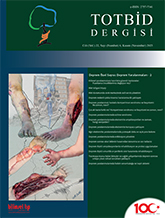
Crush injuries can ensue due to natural disasters such as earthquakes. Direct muscle damage occurs immediately after the earthquake-related high-energy injury, followed by ischemia, reperfusion damage, and muscle cell lysis (rhabdomyolysis). Systemic pathologies occur by mixing muscle deterioration products and cell contents into systemic blood circulation. In addition to the regional manifestations of crush injury, it may result in several life-threatening systemic severe pathologies - which is referred crush syndrome-such as kidney failure, electrolyte disturbances, arrhythmias, and acute respiratory distress syndrome. Therefore, early detection of earthquake victims with crush injuries and prevention of severe systemic problems secondary to rhabdomyolysis is crucial. The injured limb should also be evaluated for compartment syndrome at an early stage and treated appropriately. Fasciotomy should only be performed in the early period, and it should be kept in mind that the patient`s systemic condition may worsen, primarily if it is performed in the late period. Hyperbaric oxygen therapy is beneficial in reducing ischemic damage and promoting the healing of critically injured muscle tissue. On the other hand, mannitol should be considered an alternative to surgical intervention such as fasciotomy, which may effectively reduce intra-compartmental pressure. Amputation should only be performed in the presence of an unrecoverable limb or life-threatening situations. Wound infection and sepsis may occur due to open wounds during disasters or secondary to surgical interventions. It can cause an increase in metabolic deterioration, leading to septic shock and multi-organ failure. The care of open wounds or fasciotomy wounds is essential both for the prevention of infection and control of the infection source and is managed with repetitive debridement, antibiotics and, if possible, negative pressure wound dressings. Orthopedics and traumatology specialists should coordinate with other disciplines in the surgical treatment decision-making process to reduce potential mortality and morbidity.